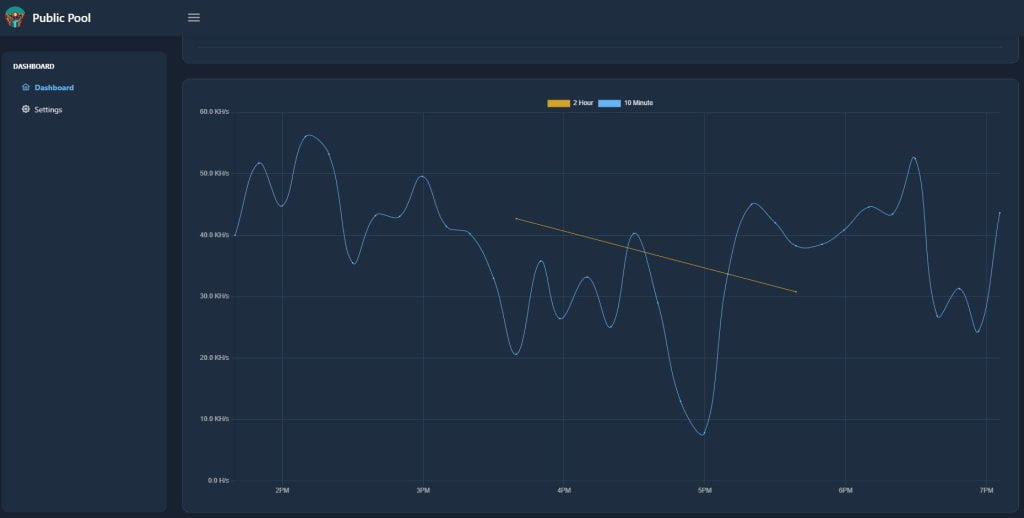Bitcoin Mining: Exploring the Block-Building Process, Hashing and Target Difficulty
Introduction:
Bitcoin relies on a decentralized network of miners to secure the network and maintain the integrity of its blockchain. At the core of this process lies Bitcoin mining, an intricate procedure that involves miners constructing blocks of transactions and attempting to find a specific hash to meet the target difficulty set by the network. It’s worth noting that the target difficulty is adjusted every two weeks (approx.) depending on the hashrate of the network during that period. In this article, we will delve into the details of how Bitcoin miners build candidate blocks with transactions from the mempool and try different nonces (number found only once) to uncover a hash that satisfies the required number of leading zeros to meet the target difficulty.
Understanding the Mempool:
Before we can explore the process of block-building, it is essential to grasp the concept of the mempool. The mempool, short for memory pool, is a dynamic data structure that acts as a temporary repository for unconfirmed transactions within the Bitcoin network. Whenever a user initiates a Bitcoin transaction, it propagates through the network, and if valid, it enters the mempool of each participating node.
Constructing a Candidate Block:
Bitcoin miners aim to create blocks of transactions that will be added to the blockchain. To achieve this, they begin by constructing a candidate block. Miners select a subset of transactions from the mempool, usually starting with those offering higher transaction fees, as they have a greater incentive for inclusion in the block. However, the precise selection process may vary among miners.
Once a miner has chosen a set of transactions, they arrange them in a specific order within the block. This ordering is critical as it affects the final block's hash and, subsequently, its validity. Therefore, miners employ various techniques, such as sorting transactions by fee rates or utilizing priority rules, to optimize the block's structure.
Hashing with the Nonce:
After constructing the candidate block, miners proceed to the heart of the mining process – hashing with the nonce. A nonce is a 32-bit arbitrary random number that is typically used once, it is placed with the block header, and it plays a crucial role in the mining procedure. Miners iteratively change the nonce value in the block header and hash the resulting block header until they find a hash that meets the target difficulty requirements.
The target difficulty is a measure of how hard it is to find a valid block hash. It is determined by the Bitcoin network and as mentioned adjusted approximately every two weeks to maintain the average block time at around 10 minutes. The target difficulty is represented by a numerical value and dictates the number of leading zeros required in the hash. Miners need to find a hash that starts with enough zeros to meet or be below the target difficulty.
Mining Hardware and Probability:
Bitcoin mining has become increasingly competitive over time, with specialized hardware known as ASICs (Application-Specific Integrated Circuits) dominating the field. These powerful machines are designed solely for the purpose of mining bitcoin (hashing SHA256) and offer significantly higher hash rates than traditional CPUs or GPUs.
Despite the sophisticated hardware, finding a valid block hash is still a probabilistic process. Miners generate countless hashes by tweaking the nonce and other parameters in the block header. The probability of finding a suitable hash is proportional to the miner's computational power, (represented by the hash rate) as this allows them to make more attempts at fining a hash that meets the target difficultly. The bigger a miners hashrate, the more attempts they can make per second, the more attempts they can make per second the greater the chance they will be the first to find a hash that meets the target difficulty and collect the rewards for adding the next block to the blockchain.
We can now understand why the NerdMiner, with its extremely low hashrate, lacks the computational power to generate a competitive number of hash calculations per second, making it extremely unlikely to find a block hash before large mining farms that attempt tens of millions more calculations each second. While it is not entirely impossible, in the fiercely competitive Bitcoin mining industry, where miners with higher hashrates prevail, the odds are heavily stacked against the NerdMiner.
Conclusion:
Bitcoin mining serves as the backbone of the Bitcoin network, enabling transactions to be securely recorded on the blockchain. By constructing candidate blocks with transactions from the mempool and utilizing the nonce to search for a hash that meets the target difficulty, miners compete to add new blocks to the blockchain and earn block rewards. As the ecosystem continues to evolve, understanding the intricate workings of Bitcoin mining is crucial for comprehending the technology behind this groundbreaking digital currency.




